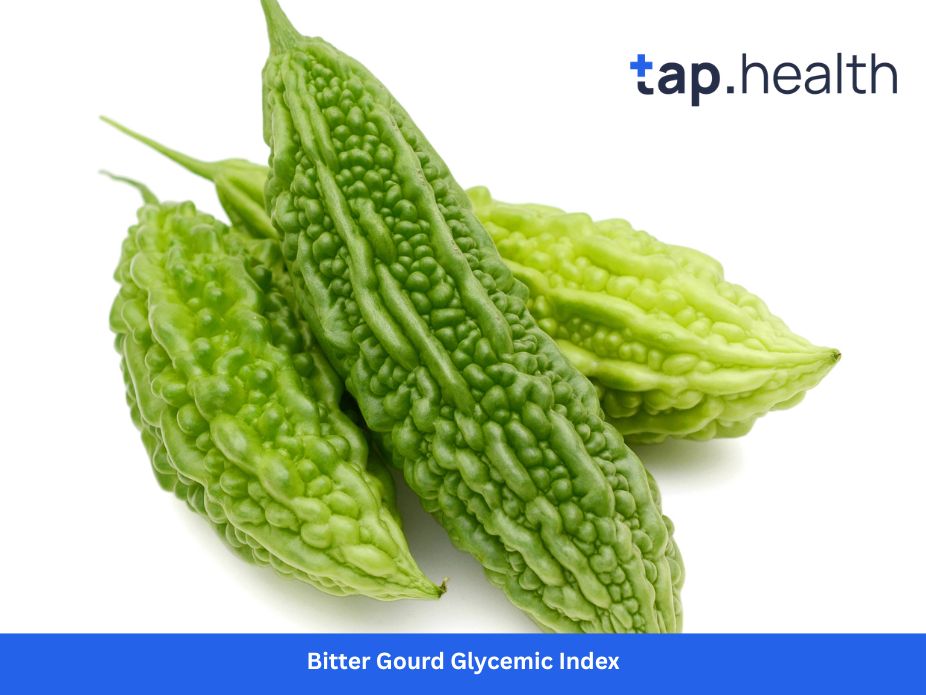Bitter gourd, also known as bitter melon or karela, isn’t winning any popularity contests for its taste. Its name says it all—it’s bitter. But what if this bumpy, green vegetable held a secret power, especially for people worried about their blood sugar?
You’ve probably heard about the glycemic index (GI) if you or someone you love has diabetes or prediabetes. It’s a tool that helps you understand how food affects your blood sugar. And when it comes to the bitter gourd glycemic index, the story is incredibly exciting.
In this complete guide, we’re going to break down everything you need to know. We’ll keep it simple and clear, explaining the science in a way that’s easy to grasp. By the end, you might just look at that bitter veggie in the grocery store in a whole new light.
What is the Glycemic Index (GI)? A Simple Explanation
Before we dive into bitter gourd specifically, let’s get one thing straight: what exactly is the Glycemic Index?
Think of your bloodstream as a highway. Carbohydrates from the food you eat are like cars entering this highway. The Glycemic Index is a speedometer for those cars. It measures how fast a particular food can raise your blood sugar (glucose) levels.
Foods are ranked on a scale of 0 to 100.
- Low GI (55 or less): These are the slow, steady drivers. They cause a gradual, gentle rise in blood sugar. Think of foods like lentils, beans, most fruits, and oats.
- Medium GI (56 to 69): These drivers have a heavier foot on the pedal. They cause a moderate increase in blood sugar. Examples include brown rice, whole wheat bread, and honey.
- High GI (70 and above): These are the speedsters, the race cars. They cause a rapid and sharp spike in your blood sugar. White bread, white rice, sugary sodas, and potatoes fall into this category.
For people managing diabetes, sticking to low GI foods is like managing traffic for a smoother, safer ride throughout the day, avoiding dangerous sugar spikes and crashes.
So, What is Bitter Gourd’s Glycemic Index?
This is the million-dollar question. And the answer is fantastic for blood sugar management.
Bitter gourd has an extremely low glycemic index.
While an official, universally agreed-upon number is hard to pin down because it can vary slightly with preparation, health authorities and studies consistently classify it as a very low GI food. It’s often considered to have a GI close to zero.
Why is it so low? It’s simple. Bitter gourd is very low in carbohydrates and high in fiber. Remember, carbs are the “cars” on the blood sugar highway. Bitter gourd has very few cars to release, and the fiber it contains acts like a traffic controller, slowing down the digestion of the few carbs that are present.
This makes it an absolute superstar in a diabetic-friendly diet.
Beyond the Number: How Bitter Gourd Actively Fights High Blood Sugar
The low glycemic index of bitter gourd is just the beginning of the story. This vegetable doesn’t just not harm your blood sugar; it actively works to improve it. It’s like a security guard for your bloodstream. Here’s how:
It Acts Like a Natural Medicine
Bitter gourd is packed with powerful plant compounds that have medicinal properties. The most important ones for diabetes are:
- Charantin: This is a well-researched compound in bitter gourd that is known to help lower blood sugar levels. Scientists believe it works by helping your muscles use glucose more effectively and by slowing down how much sugar your gut absorbs.
- Polypeptide-p: This is often called a “plant insulin” because it mimics the action of human insulin. For people with type 1 diabetes, whose bodies don’t produce insulin, and type 2 diabetes, whose bodies are resistant to insulin, this can be a game-changer.
- Vicine and Lectins: These are other compounds that contribute to bitter gourd’s blood sugar-lowering effect by acting on the tissues outside the pancreas.
It Boosts Insulin Sensitivity
In Type 2 diabetes, the body’s cells stop responding well to insulin (this is called insulin resistance). Insulin is the key that unlocks your cells to let sugar in for energy. When the keys don’t work, sugar piles up in the blood.
Bitter gourd helps make the locks on your cells more sensitive. It helps the insulin “key” work better, allowing glucose to enter the cells and be used for energy, which lowers the sugar level in your blood.
It’s a Fiber Powerhouse
We touched on this before, but it’s worth repeating. Fiber is a non-digestible carbohydrate. It doesn’t break down into sugar. Instead, it adds bulk to your food and slows down the digestion process. When you eat bitter gourd, the fiber ensures that any sugars from other foods in your meal are released into your bloodstream slowly, preventing those sudden spikes.
Proven Health Benefits of Bitter Gourd (More Than Just Blood Sugar!)
While we’re focusing on the bitter gourd glycemic index and diabetes, this vegetable offers a whole suitcase of other health benefits.
- Packed with Nutrients: It’s a great source of Vitamin C (for immunity), Vitamin A (for vision), folate (for cell growth), and potassium (for heart health).
- Powerful Antioxidants: Bitter gourd is loaded with antioxidants like flavonoids and phenols. These compounds fight off “free radicals” in your body, which cause cell damage and can lead to chronic diseases.
- May Help Lower Cholesterol: Some studies suggest that bitter gourd can help reduce levels of “bad” LDL cholesterol, which is good news for your heart.
- Could Aid in Weight Loss: It’s low in calories and high in fiber. This combination helps you feel full for longer, reducing your overall calorie intake, which is a key part of any weight management plan.
How to Add Bitter Gourd to Your Diet (Without Hating It)
Okay, so it’s good for you. But how do you eat it without cringing? The bitterness can be tamed. Here are some simple and tasty ways to incorporate bitter gourd into your meals.
Preparation is Key: Reducing the Bitterness
- Salt and Rest: Slice the bitter gourd and sprinkle it generously with salt. Let it sit for 20-30 minutes. You’ll see beads of water (containing the bitter compounds) form on the surface. Rinse it thoroughly and squeeze out the excess water before cooking.
- Blanching: Briefly boil the sliced bitter gourd in water for 2-3 minutes, then plunge it into ice-cold water. This also helps reduce the sharp bitterness.
Simple and Delicious Recipe Ideas
- Stir-fry: This is the most common method. Sauté sliced bitter gourd with onions, garlic, and spices like turmeric and cumin. You can add potatoes or other veggies to balance the flavor.
- Stuffed Karela: A classic Indian dish. The bitter gourd is slit, deseeded, and stuffed with a flavorful mix of spices and then cooked until tender.
- Bitter Gourd Juice: This is a potent but effective way to consume it. Blend a small bitter gourd (seeds removed) with half a green apple and a squeeze of lemon to make it palatable. Start with a small amount!
- Bitter Gourd Chips: Thinly slice the gourd, toss with a little oil and salt, and bake until crispy for a healthy, crunchy snack.
Important Precautions and Side Effects
As powerful as bitter gourd is, it’s not for everyone. It’s crucial to be aware of the following:
- If You Are on Diabetes Medication: This is the most important point. Because bitter gourd lowers blood sugar, combining it with diabetes drugs like insulin or metformin can cause your blood sugar to drop too low (hypoglycemia). Always consult your doctor before adding significant amounts of bitter gourd to your diet if you are on medication.
- Pregnancy and Breastfeeding: Pregnant women should avoid consuming large amounts of bitter gourd as it may trigger contractions or have other adverse effects.
- Can Cause Digestive Upset: For some people, especially when consumed in large quantities or as juice, it can lead to stomach pain or diarrhea.
- People with G6PD Deficiency: Those with this genetic condition should avoid bitter gourd as it may trigger “favism,” which can lead to anemia.
The golden rule? Moderation is key. Start with small amounts and see how your body reacts.
Frequently Asked Questions (FAQ) on Bitter Gourd Glycemic Index
Can I eat bitter gourd every day if I have diabetes?
While it’s beneficial, it’s best not to overdo it. Especially if you are on medication, daily consumption could lead to dangerously low blood sugar. It’s safer to enjoy it a few times a week as part of a balanced diet and under medical guidance.
Is bitter gourd juice or cooked bitter gourd better for diabetes?
Both are beneficial. Juice delivers a more concentrated dose of the active compounds, making it very potent. However, cooked bitter gourd is gentler on the stomach and the fiber remains intact, which is great for slow sugar absorption. For beginners, starting with cooked bitter gourd is advisable.
What is the best time to drink bitter gourd juice for blood sugar control?
Many people find it effective to drink a small glass of bitter gourd juice on an empty stomach in the morning. This may help kickstart blood sugar management for the day. However, listen to your body, as it can be strong on an empty stomach.
Are bitter gourd supplements as effective as the fresh vegetable?
Supplements (like capsules or extracts) can be convenient, but they may not contain the full spectrum of beneficial compounds and fiber found in the whole vegetable. It’s always better to get nutrients from whole foods when possible. If you choose supplements, buy from a reputable brand and, again, consult your doctor.
Does cooking destroy the blood sugar-lowering compounds in bitter gourd?
Some heat-sensitive nutrients like Vitamin C may be reduced, but the key active compounds for blood sugar control—charantin and polypeptide-p—are fairly stable and remain effective after light cooking (like stir-frying or steaming). Avoid overcooking it into mush.
Can bitter gourd cure diabetes?
No. Bitter gourd is an excellent food for managing and controlling blood sugar levels, but it is not a cure for diabetes. Diabetes is a chronic condition that requires a comprehensive management plan including diet, exercise, and often medication, as directed by your healthcare provider.



